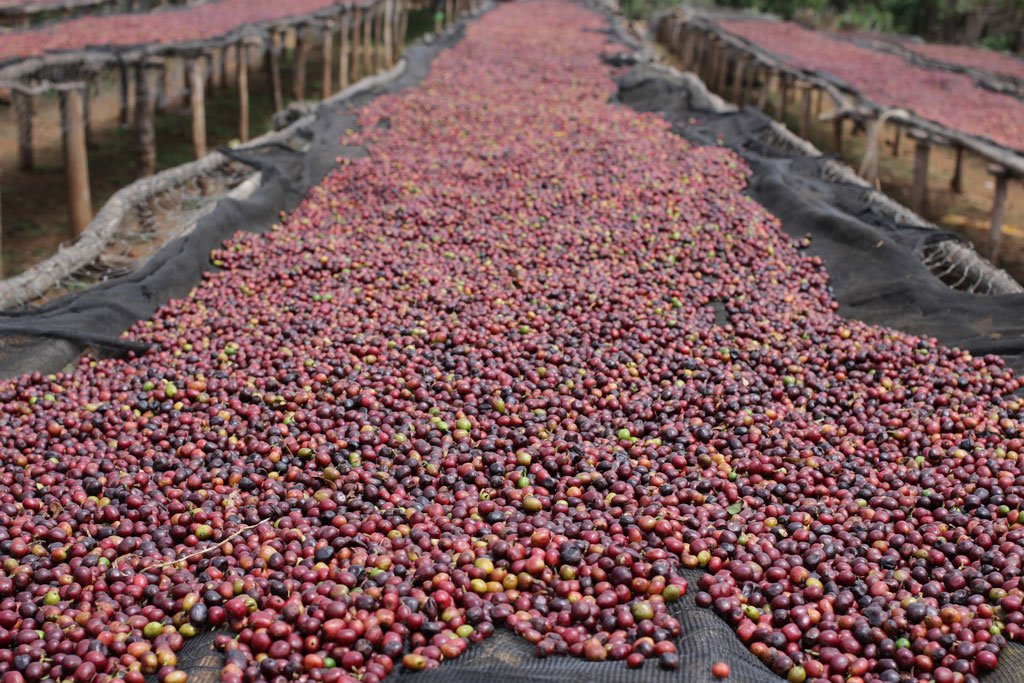Picking the coffee fruit and separating the cherry’s flesh and skin from the coffee bean itself is a crucial aspect of farming coffee. The subsequent processing method of the coffee has a dramatic effect on the flavour of your coffee and you’ll often hear the terms, washed, dried and pulped as different processing methods.
Why is coffee processed?
The main aim of processing coffee is to separate the bean from the cherry fruit flesh.
What is the natural (Dry) process?
The natural process is the most traditional way to process coffee. Once the coffee cherries are picked from the trees, they are laid out to dry in the sun. Think of it a bit like the process of producing a sun-dried tomato. To avoid fermentation and mould growing, the coffee beans are turned regularly to allow air flow and covered overnight to prevent them getting wet. Once the coffee cherries are completely dry they are processed to remove the skin and dried fruit flesh and leave just the green coffee bean. Beans processed using this method usually divide opinion. There can often be fermented flavours similar to alcohol as well as the traditional fruit flavours like blueberry and strawberry.
What is the washed (Wet) process?
The washed process is the most common method for processing green coffee. In this process all of the fruit flesh is removed from the coffee bean before it enters the drying process. The majority of the fruit flesh is removed using a depulper and then after this the beans are submerged in water to remove the remainder of the fruit flesh. The beans are then dried in the same method as the natural process, with regular turning to stop fermentation or mould. This process leads to more acidic flavours in the cup and is usually preferred by baristas. However, this method does require a large amount of water so can be expensive for farmers to process.
What is the pulp (Natural) process or honey process?
In the pulp process the cherries are removed from the coffee bean but a certain amount of flesh is left on the beans. The beans then go straight to drying, as some flesh has been left on the bean, the sugars from the fruit help to increase the sweetness of the bean. The pulp is sometimes known as ‘honey’ and so this method can also be known as the ‘honey washed’ process. This method is a kind of compromise between the natural and the washed methods. These coffees tend to be rounder in acidity than the other two methods with less citrus flavours.
Try these types of coffee out side by side to really appreciate the flavour differences.

